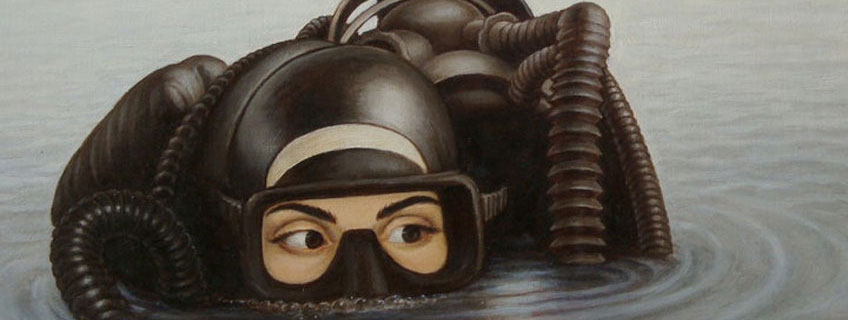- Exhibitions
- Contacts
- About
- INSTALLATION VIEWS
- COSTANTE COLORE
- ETERI CHKADUA. Gaumarjos
- GIUSEPPE STAMPONE SOLO SHOW
- JAMES CASE-LEAL. ULTRAVIOLET CATASTROPHE.
- NOTTURNO +
- PALAZZO CON VISTA. BIENNALE DI VENEZIA 2015
- PATRICK JACOBS, Nocturnes
- STEFANIA FERSINI. Show on Show
- STEFANIA FERSINI. Toreros d’Aujourd’hui
- Stefano Cerio, Aquila. Con Saluti dall’Abruzzo di Giuseppe Stampone
- VITEL TONNE’. BIENNALE DI VENEZIA 2017
- NEWS
- Artists

Eteri Chkadua
by Cintra Wilson
Writer Social Critic for The New York Times
Madonna, a collector of Frida Kahlos self-portraits, once remarked that a painting of Kahlos in her foyer — one of the artist giving birth to herself — was, in effect, her litmus test: if visitors didnt like the painting, Madonna quipped, only half-joking, then they couldnt really be her friend.
The most obvious thing to say about the work of Eteri Chkadua is that she is the natural successor to Frida Kahlo. Or the natural successor to Madonna. Or both. In any case, neither Frida nor Madonna has anything over Eteri when it comes to the art of the psychological strip-tease — the artist revealing herself through the frame of her art; the paintings as the stage and proscenium in which the artist reveals herself to herself — and us to ourselves.
Eteris self-portraits are perhaps best seen in the contexts of earlier works — redolent of those lost years of Pieter Brueghel the Elder when he let his marijuana consumption get out of hand, hanging out in Flatbush with dreadlocked hustlers in the early 1990s.
What is immediately arresting in Eteris paintings is her vast technical skill — The Georgian Academy of Fine Arts, still under Soviet occupation when Eteri was a student, gave her the kind of rigorously formal training that many Western art schools seem to think is superfluous to an art education.
But from this astringently formal background, Eteri, like the best of street hustlers, kidnapped her own classical education and enslaved these old Dutch Master skills to the whims of her own unabashedly personal exploration. With the unflinching hands of a butcher, Eteri turns her exceptionally wild and utterly modern psyche inside-out, and exposes her own entrails as objectively and attractively as one might for the charcuterie display at Harrods.
Eteris paintings are a visceral summary of the psychic paradoxes of being a brazen, contemporary female. They are a gleeful rejection of any socio-political landscape whose mythologies frown on exuberant displays of rowdy wit, flamboyant style, and unapologetic sexual wisdom.
Why is it American people have such problems? she once rhetorically asked me. Oh, I was beaten by my parents, boo hoo. So what!? she cried in mock-outrage. Everybody was beaten.
Shes right, of course — but while this may seem like a shockingly unsympathetic standpoint from an Oprah-softened, Western perspective, there is actually a great secret in Eteris attitude: Eteri work tells us is that we do not escape our pasts by stopping to cry about them, we transcend our pasts by living life as exuberantly as possible, and expressing ourselves in cheerful defiance of all obstacles and objections from family, state or religion.
My particular favorite painting– the blue demon (who is Eteri, yet not Eteri, and therefore anyone who has ever felt this way) upsetting various precious artifacts of Georgian origin. This is a painting of personal terror — the ungodly, solitary fright of the known criminal — the artist who knows she is violating and betraying the precious designs of her culture, right as she paints.
And she keeps painting, in this robust, indestructible fashion.
This is what moves me – Eteris relentless dedication to expressing these truths about herself, no matter how scary or alienating. Her heroine may not be conventionally beautiful, but she is utterly exquisite, like a Tennessee Williams play, in the poetry of her impure feelings.
These feelings translate into permission for the viewer — the same expansive permission that Eteri has given herself to be a lover and a fighter, triumphant and miserable, sexy and desperate, hysterically goofy .and an un unequivocal genius.
